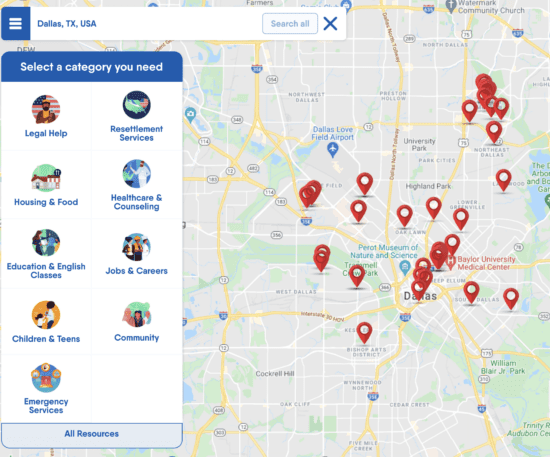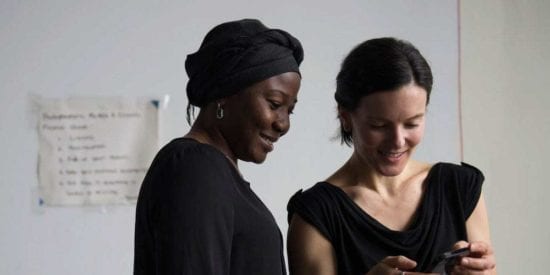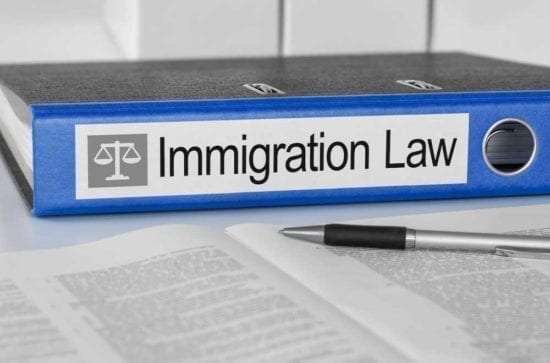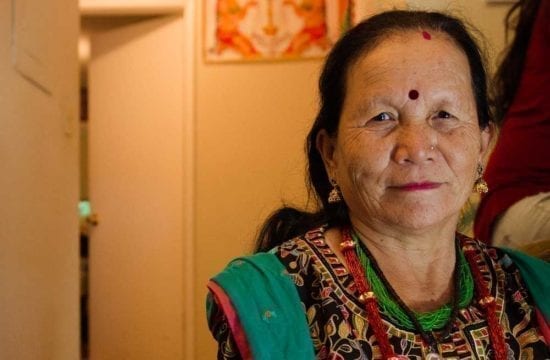Ki sa ki divèsite?
Divèsite se yon varyete diferan moun, bagay, oswa lide. Lè nou pale sou divèsite nan Etazini, anjeneral li se sou moun ak ras diferan. Li ka gen ladan tou pa lòt gwoup tankou etnisite, relijyon, oryantasyon seksyèl, sèks, kapasite, ak laj.
Li pa sèlman sou diferans ki genyen. Li kapab tou sou fason diferans yo benefisye yon kominote. Ekite ak enklizyon se bagay enpòtan pou w panse lè w ap pale de divèsite.
Ekite se lè tout moun resevwa sa yo bezwen pou tout moun gen tretman jis. Pou bagay yo dwe ekitab kèk gwoup moun bezwen plis èd pase lòt.
Ekite pa menm ak egalite. Egalite se lè moun yo resevwa menm opòtinite.
Enklizyon se sou enkli moun ki soti nan diferan gwoup epi ba yo opòtinite. Sa vle di tou respekte ak valè eksperyans yo ak kontribisyon yo. Sa a enpòtan pou moun ki tipikman yo te eskli. opinyon yo gen anpil valè nan diskisyon nan kominote a ak nan pran desizyon.
Rechèch montre ke divès espas travay yo pi kreyatif ak inovatè. Yo pi bon tou nan pran desizyon.
Ras
Ras se yon bagay sosyete kreye ki divize moun an gwoup ki baze sitou sou karakteristik fizik yo. Moun blan yo se majorite nan peyi Etazini. Souvan yo rele moun ki gen diferan ras ki pa blan yo "minorite".
Dapre resansman 2021 la, popilasyon Etazini an se:
- 59.3% Blan epi yo pa Panyòl oswa Latino
- 18.9% Panyòl oswa Latino
- 13.6% Nwa oswa Afriken Ameriken
- 6.1% Azyatik
- 2.9% De oswa plis ras
- 1.3% Ameriken Ameriken ak Alaska natif natal
- 0.3% natif natal Awayi ak lòt moun nan zile Pasifik la
Etazini plis divès pase tout tan anvan. Moun nwa yo se majorite nan pati sid la. Moun Panyòl yo se majorite nan pati Sidwès la ak Lwès.
Fòm gouvènman yo souvan mande sou ras. Enfòmasyon yo ede asire sèvis yo satisfè bezwen diferan gwoup yo.
Rasis ak diskriminasyon
Rasis ak diskriminasyon se yon pati regilye nan lavi anpil moun nan Etazini. Diskriminasyon se lè yo trete yon moun enjis paske li fè pati yon gwoup sèten. Rasis se lè tretman sa a se poutèt ras yo.
Li kont lalwa pou fè diskriminasyon kont yon moun poutèt li:
- Laj
- Andikap
- Orijin nasyonal
- Ras ak koulè
- Relijyon oswa lafwa
- Idantite sèks oswa oryantasyon seksyèl
Ou ka ede sispann rasis lè w aprann sou eksperyans lòt moun. Koute yo epi eseye konprann kisa sa ye pou yo. Pataje pwòp eksperyans ou ak rasis. Pale si yon moun ap di oswa fè yon bagay ki rasis. Rapòte diskriminasyon.
| Ras ak etnisite pa menm. Etnisite se diferans ki genyen ant moun akòz lang ak kilti. Li baze sou kote w ap viv la oswa kilti ou pataje ak lòt moun. Etnisite anjeneral chwazi pa chak moun. |
Kilti
Depi 17yèm syèk la, imigran ki soti toupatou nan mond lan vin nan Etazini. Gen moun nan tout diferan etnisite, ak yon varyete de kilti ak lang. Moun Meksiken, Chinwa, Endyen ak Filipin se yo ki pami pi gwo gwoup yo.
Anpil Ameriken pataje menm jan lavi ak valè jeneral yo. Men, se pa tout moun ki konpòte yo oswa panse menm jan an. Gen anpil diferan kilti ki enfliyanse fason moun yo. Gen kilti ki soti andeyò Etazini ak kilti ki soti nan diferan rejyon nan peyi a.
Jwenn yon lis itil nan diferans kiltirèl nan Etazini.
Pa gen okenn lang ofisyèl nan Etazini. Anglè se lang ki pi lajman itilize men gen anpil lòt lang ki pale. Sa yo enkli plis pase 41 milyon moun ki pale Panyòl ak 3.5 milyon moun ki pale Chinwa. Gen plis pase 1 milyon moun ki pale chak vyetnamyen, arab, franse ak Koreyen.
Relijyon
Majorite moun nan Etazini dekri tèt yo kòm kretyen. Sa a se swiv pa moun ki pratike Jidayis, Endouyis, Boudis, ak Islam. Nan dènye ane yo, kantite moun ki pa idantifye ak yon relijyon te ogmante tou.
Gen libète relijyon nan Etazini. Ou ka pratike nenpòt relijyon ou vle. Gouvènman an pa enpoze yon kwayans patikilye. Moun yo swiv plizyè relijyon diferan e sa te enfliyanse kilti Ameriken ak tradisyon.
Li enpòtan pou divès kominote relijye nou an gen opòtinite pou yo pratike libète, tankou bay Mizilman yo yon plas nan travay oswa lekòl pou lapriyè.
Oryantasyon seksyèl ak sèks
Lwa federal Etazini pwoteje moun kont diskriminasyon ki baze sou oryantasyon seksyèl ak sèks.
LGBTQ+
LGBTQ+ la vle di madivin, masisi, biseksyèl, transgender (trans), ak queer. Siy plis "+" la se pou lòt idantite seksyèl ak idantite sèks. 7.1% moun nan Etazini idantifye kòm LGBTQ+.
Akseptasyon divèsite LGBTQ+ varye. Sa depann de kote, kilti, ak orijin endividyèl. Nan tout peyi a, maryaj masisi legal e kominote LGBTQ+ nou an selebre chak mwa jen pandan Mwa Fyète.
Aprann plis sou dwa LGBTQ+.
Sèks
Divèsite nan sèks ka souvan gen rapò ak diferans ki genyen ant gason ak fanm, ke yo rele tou "gap nan sèks". Pa egzanp, gason yo te bay plis opòtinite nan karyè yo. Gen kèk espas travay ak wòl travay yo se gason majorite.
Divèsite sèks tou rekonèt ak respekte lòt fason yo idantifye. Gen kèk moun ki pa idantifye sèlman kòm yon gason oswa yon fanm. Gen lòt ki pa idantifye ak sèks yo te ba yo lè yo fèt. Li enpòtan pou itilize non yon moun ak pwonon pi pito.
Kapasite
Divèsite kapasite refere a diferan kapasite ak andikap. Chak moun gen ladrès diferan. Kapasite yo ka varye selon ki aksè yon moun te genyen nan edikasyon ak lòt resous.
Andikap yo se kondisyon nan kò a oswa nan lespri ki fè sèten aktivite pi difisil. Yo ka afekte vizyon yon moun, mouvman, aprann, kominike, tande, ak plis ankò. Li ta ka chanje fason yon moun reyaji ak mond lan bò kote yo. 12.7% moun nan Etazini gen yon andikap.
Lwa Ameriken andikape yo (ADA) te kraze anpil baryè. Li entèdi diskriminasyon kont moun ki gen andikap nan travay ak transpò. ADA entèdi diskriminasyon nan aksè nan pwogram ak sèvis leta ak gouvènman lokal yo.
Laj
Divèsite laj se akseptasyon diferan laj nan espas travay la. Lwa sou Diskriminasyon Laj nan Travay la ta dwe pwoteje travayè ki gen plis pase 40 an, men travayè ki pi aje yo toujou rapòte ke yo gen tretman inegal.
Yo pa bay granmoun aje yo menm respè yo jwenn nan anpil lòt peyi. D 'yo nan desizyon yo pa toujou kòm valè oswa chache apre.
Kòm popilasyon an nan peyi Etazini ap grandi, li te vin pi divèsifye tou. Granmoun aje yo gen plis divès rasyal. Popilasyon sa a fè fas a defi tankou difikilte ekonomik, swen medikal, ak solitid.
Jwenn resous itil pou granmoun aje.
| Divèsite se yon bagay yo dwe selebre. Mete moun ki diferan de ou. Koute istwa yo ak eksperyans yo. Pataje pwòp ou a. Valè bagay inik nou chak gen pou ofri, espesyalman kominote imigran nou an! |

Jwenn èd legal, klas Anglè, klinik sante, sipò lojman, ak plis ankò. Chèche yon kat jeyografik lokal ak lis sèvis pou imigran nan Etazini a ak aplikasyon FindHello a.
Objektif nou se pou ofri enfòmasyon ki fasil pou konprann e ki ajou regilyèman. Enfòmasyon sa a se pa konsèy legal.



